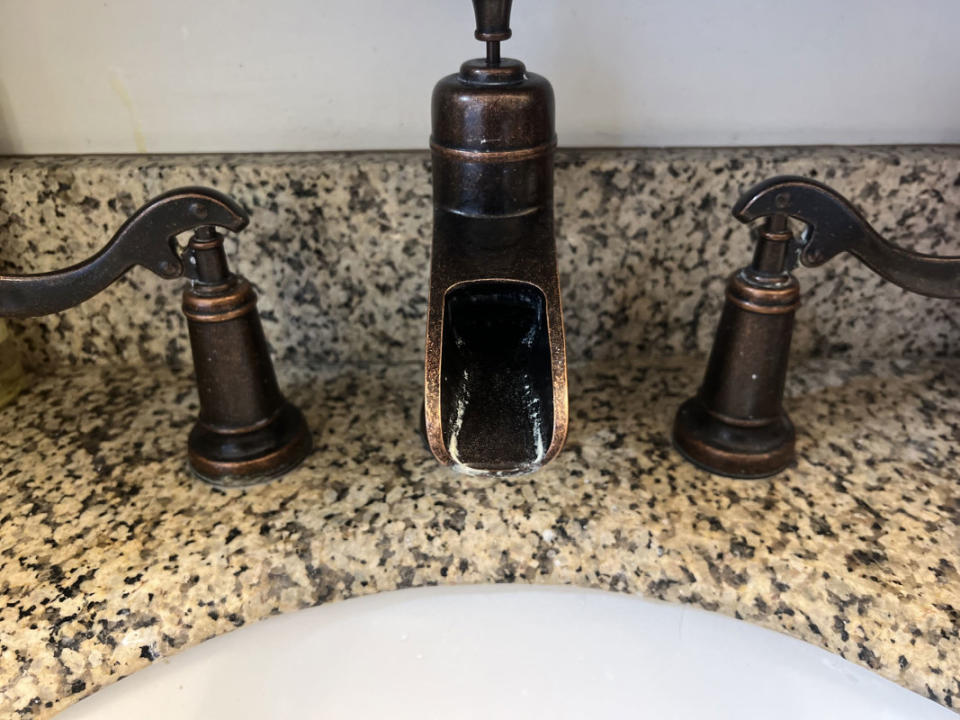How to Clean White Residue Off an Oil-Rubbed Bronze Faucet Fixture
"Question for you," asked my friend recently. "What's all the white stuff on my bathroom faucet? I keep trying to clean it, but it seems like nothing works." If you can relate, these white spots are caused by hard water deposits, specifically limescale or calcium deposits.
Over time, faucets can develop an unsightly buildup of calcium or mineral deposits due to the minerals present in the water supply. You might notice these water stains more on fixtures that have a darker finish, matte finishes, or, in the case of my friend, an oil-rubbed bronze finish. Despite regular cleaning, this residue can be stubborn, but there are ways to improve your cleaning process without causing damage.
Cleaning Tips
The most important thing to remember when cleaning tough mineral buildup off a dark or oil-rubbed bronze sink faucet is be gentle. "Think of your faucet’s rubbed bronze finish as similar to your car’s paint job," notes Gary Schopp, Delta Faucet Costumer Solutions Expert. "Do not use steel wool, Magic Eraser, or abrasive sponges or compounds to avoid damaging the protective coating and the finish."
For stubborn stains, mix one part distilled white vinegar and one part water
Spray or wipe it on, and then wipe the vinegar solution off with a soft cloth or non-abrasive sponge
If it’s really bad, let a cloth soaked in the cleaning solution sit on the affected area for 30 minutes or so, and follow up with a clean, soft toothbrush
Avoid using any harsh cleaners or abrasive soaps

Christina P.
How to Prevent Mineral Deposit Stains
"To prevent stains from forming on bronze finishes, it’s best to wipe your fixture dry whenever you see water droplets," recommends Schopp. "Letting the water evaporate on the surface is what leaves mineral deposits behind."
Keep a dry, absorbent, clean cloth near your sink
Wipe down the faucet after use
Use a 1:1 mixture of white vinegar and warm water as part of your regular bathroom cleaning routine, targeting the entire surface, the handles, and especially the spout. This proactive step can help white stains from becoming prominent.
Every 12 to 18 months, disconnect the fixture and allow it to soak in a plastic bag with 1:1 water and white vinegar. This soak will target the inner workings of your fixture and help prevent internal buildup and damage.
Is lemon juice safe for cleaning calcium deposits?
Yes, using lemon juice will work the same as white vinegar, but for the volume you'd need, we think you should just save the lemon and make something good for dinner.
Is limescale harmful?
Limescale and water spots aren't harmful to human health, but it can damage appliances, cause unpleasant tastes, and leave unsightly stains.
Is CLR safe for cleaning tough deposits?
Yes, it's a good cleaning product, but you'll still want to avoid the temptation to scrub on the water stains. Instead, soak the fixture, or saturate the deposit using CLR soaked onto a cotton ball. Abrasive cleaning is most likely to damage the finish on an oil-rubbed bronze faucet.

